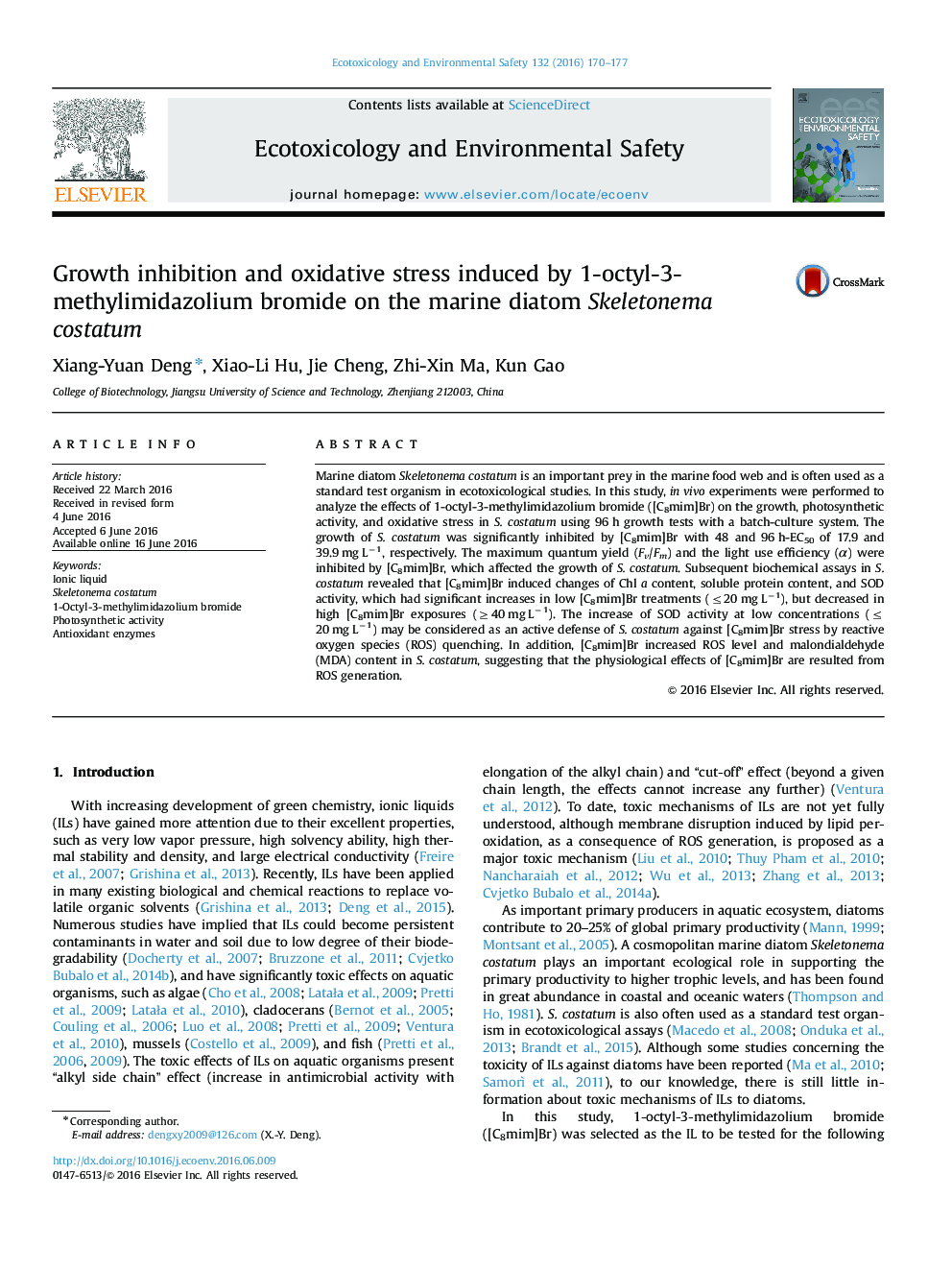| کد مقاله | کد نشریه | سال انتشار | مقاله انگلیسی | نسخه تمام متن |
|---|---|---|---|---|
| 4419078 | 1618931 | 2016 | 8 صفحه PDF | دانلود رایگان |

• [C8mim]Br affected growth and photosynthetic activities of S. costatum in 48 h.
• Physiological changes in S. costatum occurred in [C8mim]Br treatments.
• Increase in oxidative stress was evident following exposure at ≤20 mg L−1.
Marine diatom Skeletonema costatum is an important prey in the marine food web and is often used as a standard test organism in ecotoxicological studies. In this study, in vivo experiments were performed to analyze the effects of 1-octyl-3-methylimidazolium bromide ([C8mim]Br) on the growth, photosynthetic activity, and oxidative stress in S. costatum using 96 h growth tests with a batch-culture system. The growth of S. costatum was significantly inhibited by [C8mim]Br with 48 and 96 h-EC50 of 17.9 and 39.9 mg L−1, respectively. The maximum quantum yield (Fv/Fm) and the light use efficiency (α) were inhibited by [C8mim]Br, which affected the growth of S. costatum. Subsequent biochemical assays in S. costatum revealed that [C8mim]Br induced changes of Chl a content, soluble protein content, and SOD activity, which had significant increases in low [C8mim]Br treatments (≤20 mg L−1), but decreased in high [C8mim]Br exposures (≥40 mg L−1). The increase of SOD activity at low concentrations (≤20 mg L−1) may be considered as an active defense of S. costatum against [C8mim]Br stress by reactive oxygen species (ROS) quenching. In addition, [C8mim]Br increased ROS level and malondialdehyde (MDA) content in S. costatum, suggesting that the physiological effects of [C8mim]Br are resulted from ROS generation.
Journal: Ecotoxicology and Environmental Safety - Volume 132, October 2016, Pages 170–177